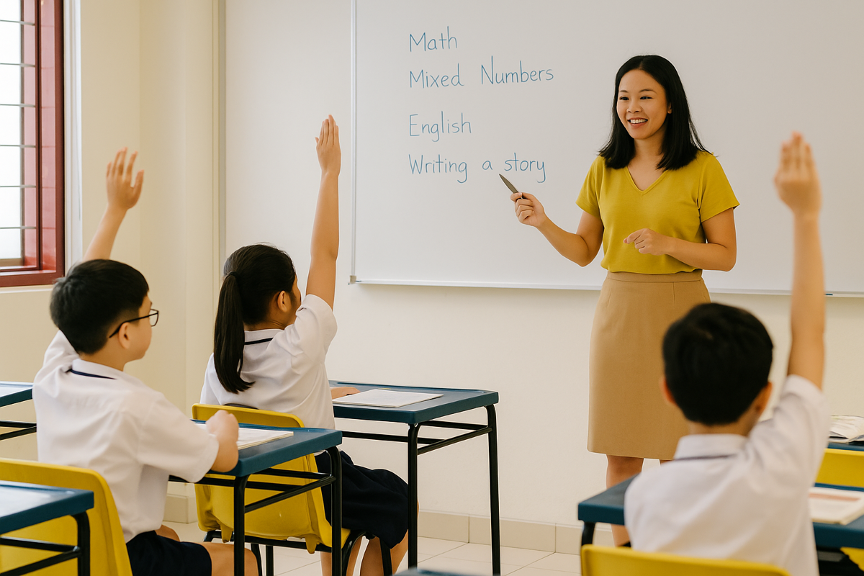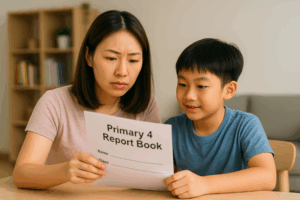When Jia Lin’s son, Wei Ming, finished Primary 4 that year, she walked into the school to collect his exam report. The principal handed her a small option form. “Choose your subject combination for P5,” he said. Jia Lin’s heart skipped a beat. Suddenly, terms like Standard, Foundation, SBB, and mix-and-match floated around her mind. She wasn’t alone in her confusion.
Singapore’s Ministry of Education (MOE) introduced Subject-Based Banding (SBB) so that students can take different subjects at levels suited to their strengths and needs. But for many parents, the transition can seem daunting, especially when decisions made today affect the child’s path in P5, P6, and beyond.

The Journey from Streaming to Banding
A decade ago, the norm was rigid streaming: after PSLE, children would be slotted into Express, Normal (Academic) or Normal (Technical) streams. But what if a student excelled in Mathematics but struggled with English? The old system had limited flexibility.
Subject-Based Banding flips this model on its head. Instead of labeling the student, it lets them take each subject at the level most appropriate for them. This means a child could take Standard Mathematics while opting for Foundation English, or vice versa—based on strengths and support needs.
Learn more at MOE: https://www.moe.gov.sg/primary/curriculum/subject-based-banding

What SBB Looks Like at the Upper Primary Stage
Imagine Wei Ming. He does very well in Mathematics and Science, but his English writing lags. Under SBB, when he enters P5, he might be allowed to take Math at the Standard level and English at Foundation, rather than forcing all subjects at the same level. Over time, if his English improves, he might be moved to standard too—if his performance justifies it.
In practice:
– If a student passes three or more subjects in P4, they may be eligible for 4 Standard subjects.
– If performance is mixed, combinations may include 3 Standard + 1 Foundation, 2 Standard + 2 Foundation, or even 4 Foundation subjects.
– Schools reassess in P5; adjustments can be made if necessary.
Source: https://www.moe.gov.sg/primary/curriculum/subject-based-banding

The Promise & Pitfalls: What to Expect
SBB offers many upsides—but also requires vigilance and informed decision-making.
Benefits include flexibility, reduced stigma, and encouragement of a growth mindset. Challenges include parental anxiety, overreach risk, and adjustment difficulties. Parents should also be mindful of the social dynamics in mixed-ability classes.
Read more at The Learning Lab: https://www.thelearninglab.com.sg/blog/tll-shares/all-about-full-subject-based-banding

How Altius Enrichment Supports Your Child Through SBB
At Altius, we understand that SBB is more than a structural shift—it’s an emotional and academic transition. Here’s how we partner with parents and students:
– Diagnostic Assessments & Placement Advice
– Tailored Tuition for Mixed Levels (stretch advanced learners, remediate weaker areas)
– Student Care as an Academic Buffer
– Progress Monitoring & Adjustment Plans
– Parent Workshops & Guidance
Discover Altius programmes:
English
Math (MPM)
Student Care

Tips for Parents Navigating SBB
• Start early: engage with teachers in P4.
• Take your child’s voice into account.
• Watch performance regularly.
• Be open to changes.
• Balance is key.
• Maintain rest, play, and emotional support.
Final Thoughts & Next Steps
When Jia Lin saw Wei Ming’s P5 combination, she worried—did she choose wrong? Over the first term, his Math soared, but English lagged. Thanks to Altius’s monitoring and adaptive support, they shifted his English level, gave extra targeted lessons, and regained confidence. He finished P6 with a more balanced profile and solid footing for secondary school.
SBB is meant to give your child choice and flexibility, not confusion. With appropriate guidance, monitoring, and support, the journey through mixed-level subjects can be navigated successfully.
Disclaimer: Names and scenarios in this article have been changed for privacy.









